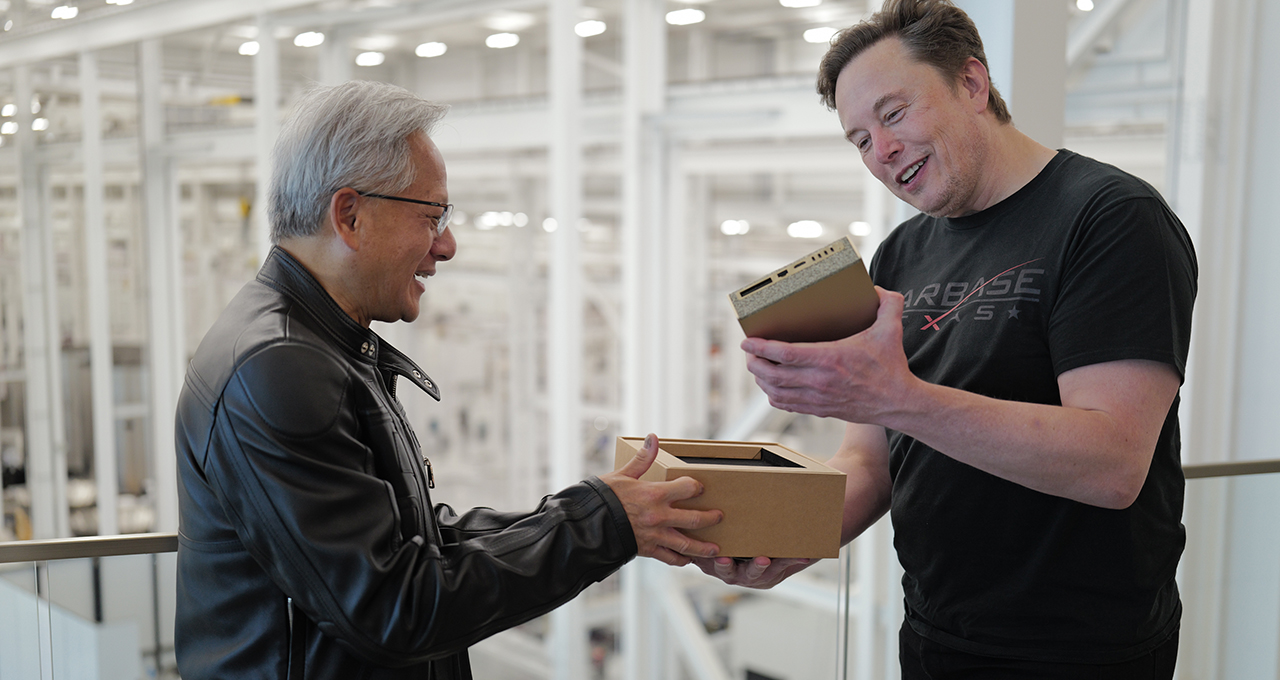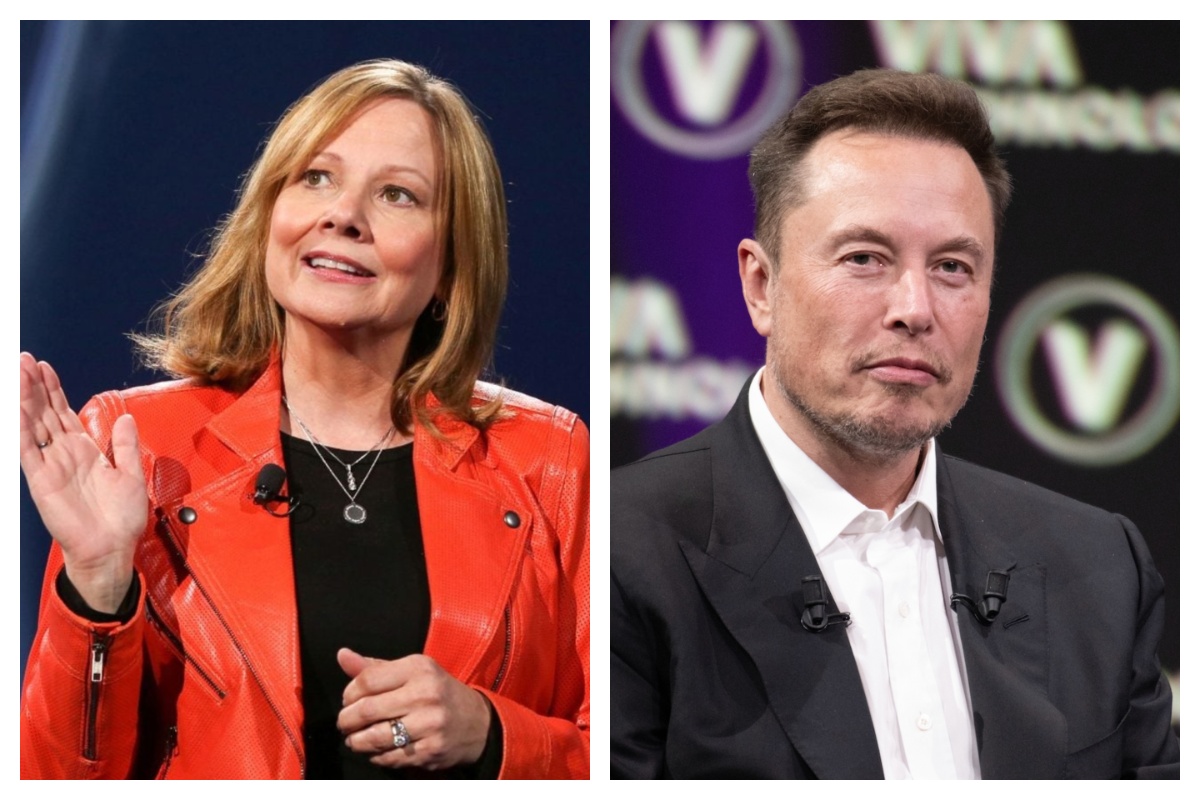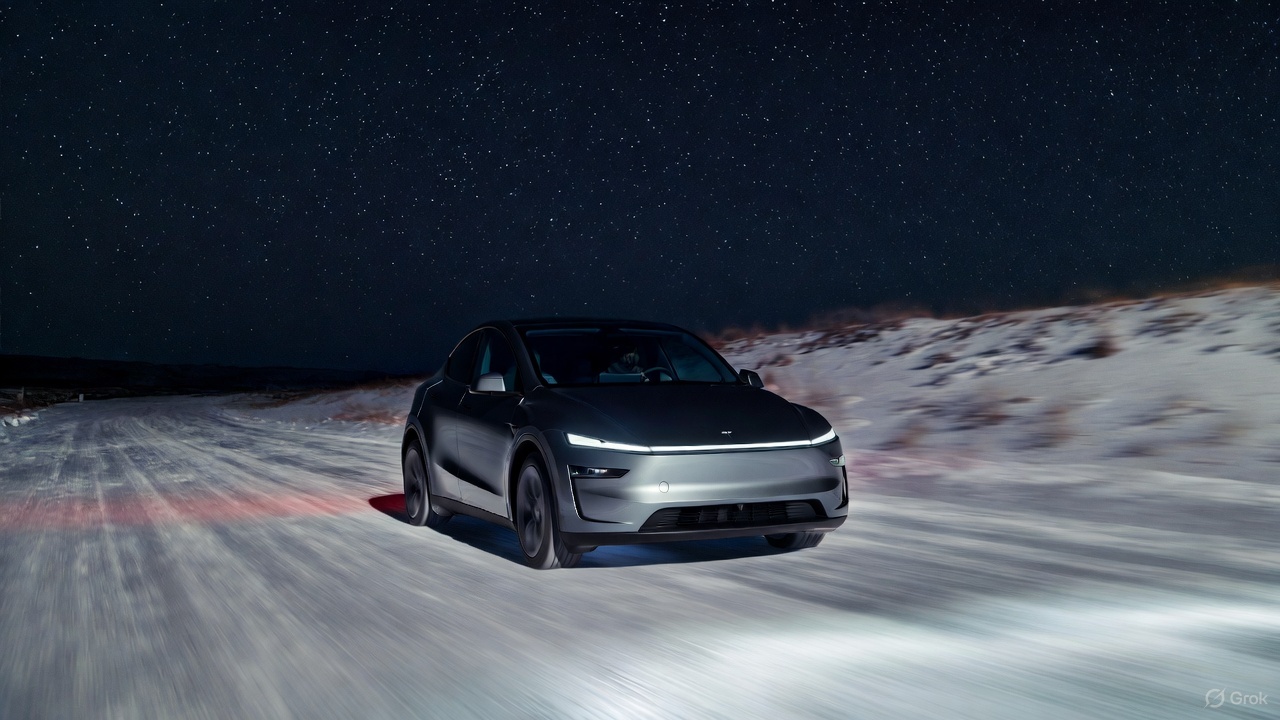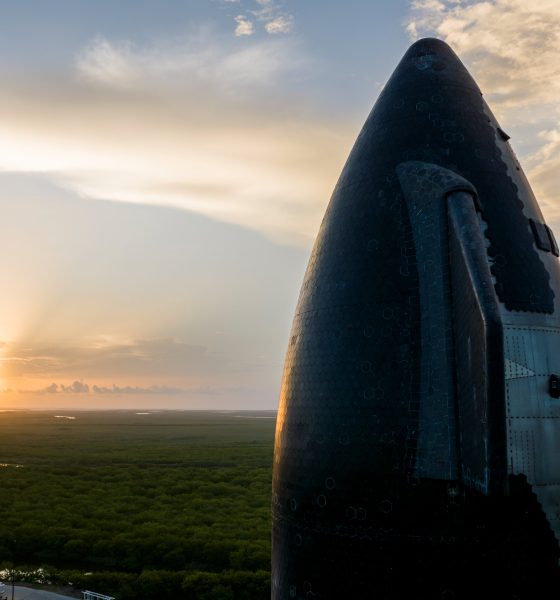SpaceX has responded to a critical report from CNBC alleging that it has repeatedly polluted waters in Texas this year. As per the private space company, the publication’s allegations about its launch operations in South Texas were factually inaccurate.
In its report, CNBC alleged that SpaceX violated environmental regulations by “repeatedly releasing pollutants into or near bodies of water in Texas.” The publication cited a notice of violation from the Texas Commission on Environmental Quality (TCEQ) about SpaceX’s water deluge system at Starbase, Texas, as part of its sources for its article.
The TCEQ reportedly received a complaint alleging that SpaceX “was discharging deluge water without TCEQ authorization” on August 2023. A total of 14 complaints alleging environmental impacts from Starbase’s deluge system have reportedly been received by the Harlingen region, the publication noted.
SpaceX repeatedly polluted waters in Texas this year, regulators found https://t.co/0KfZIxElxV— CNBC (@CNBC) August 12, 2024
In its response, which was posted through its official account on X, SpaceX noted that it worked with the TCEQ when Starbase’s water deluge system was built. SpaceX also clarified that it has only used potable water in the operations of Starship’s water deluge system.
Following is SpaceX’s full response to CNBC’s allegations.
CNBC’s story on Starship’s launch operations in South Texas is factually inaccurate.
Starship’s water-cooled flame deflector system is critical equipment for SpaceX’s launch operations. It ensures flight safety and protects the launch site and surrounding area.
Also known as the deluge system, it applies clean, potable (drinking) water to the engine exhaust during static fire tests and launches to absorb the heat and vibration from the rocket engines firing. Similar equipment has long been used at launch sites across the United States – such as Kennedy Space Center and Cape Canaveral Space Force Stations in Florida, and Vandenberg Space Force Base in California – and across the globe.
CNBC’s story on Starship’s launch operations in South Texas is factually inaccurate.
Starship’s water-cooled flame deflector system is critical equipment for SpaceX’s launch operations. It ensures flight safety and protects the launch site and surrounding area.
Also known as…— SpaceX (@SpaceX) August 12, 2024
SpaceX worked with the Texas Commission of Environmental Quality (TCEQ) throughout the build and test of the water deluge system at Starbase to identify a permit approach. TCEQ personnel were onsite at Starbase to observe the initial tests of the system in July 2023, and TCEQ’s website shows that SpaceX is covered by the Texas Multi-Sector General Permit.
When the EPA issued their Administrative Order in March 2024, it was done without an understanding of basic facts of the deluge system’s operation or acknowledgement that we were operating under the Texas Multi-Sector General Permit.
After we explained our operation to the EPA, they revised their position and allowed us to continue operating, but required us to obtain an Individual Permit from TCEQ, which will also allow us to expand deluge operations to the second pad. We’ve been diligently working on the permit with TCEQ, which was submitted on July 1st, 2024. TCEQ is expected to issue the draft Individual Permit and Agreed Compliance Order this week.
Throughout our ongoing coordination with both TCEQ and the EPA, we have explicitly asked if operation of the deluge system needed to stop and we were informed that operations could continue.
TCEQ and the EPA have allowed continued operations because the deluge system has always complied with common conditions set by an Individual Permit, and causes no harm to the environment.
Specifically:
– We only use potable (drinking) water in the system’s operation. At no time during the operation of the deluge system is the potable water used in an industrial process, nor is the water exposed to industrial processes before or during operation of the system.
– The launch pad area is power-washed prior to activating the deluge system, with the power-washed water collected and hauled off.
– The vast majority of the water used in each operation is vaporized by the rocket’s engines.
– We send samples of the soil, air, and water around the pad to an independent, accredited laboratory after every use of the deluge system, which have consistently shown negligible traces of any contaminants. Importantly, while CNBC’s story claims there are “very large exceedances of the mercury” as part of the wastewater discharged at the site, all samples to-date have in fact shown either no detectable levels of mercury whatsoever or found in very few cases levels significantly below the limit the EPA maintains for drinking water.
– Retention ponds capture excess water and are specially lined to prevent any mixing with local groundwater. Any water captured in these ponds, including water from rainfall events, is pumped out and hauled off.
– Finally, some water does leave the area of the pad, mostly from water released prior to ignition and after engine shutdown or launch. To give you an idea of how much: a single use of the deluge system results in potable water equivalent to a rainfall of 0.004 inches across the area outside the pad which currently averages around 27 inches of rain per year.
With Starship, we’re revolutionizing humanity’s ability to access space with a fully reusable rocket that plays an integral role in multiple national priorities, including returning humans to the surface of the Moon. SpaceX and its thousands of employees work tirelessly to ensure the United States remains the world’s leader in space, and we remain committed to working with our local and federal partners to be good stewards of the environment.
Don’t hesitate to contact us with news tips. Just send a message to simon@teslarati.com to give us a heads up.

Elon Musk
NVIDIA CEO Jensen Huang commends Tesla’s Elon Musk for early belief
“And when I announced DGX-1, nobody in the world wanted it. I had no purchase orders, not one. Nobody wanted to buy it. Nobody wanted to be part of it, except for Elon.”

NVIDIA CEO Jensen Huang appeared on the Joe Rogan Experience podcast on Wednesday and commended Tesla CEO Elon Musk for his early belief in what is now the most valuable company in the world.
Huang and Musk are widely regarded as two of the greatest tech entrepreneurs of the modern era, with the two working in conjunction as NVIDIA’s chips are present in Tesla vehicles, particularly utilized for self-driving technology and data collection.
Nvidia CEO Jensen Huang regrets not investing more in Elon Musk’s xAI
Both CEOs defied all odds and created companies from virtually nothing. Musk joined Tesla in the early 2000s before the company had even established any plans to build a vehicle. Jensen created NVIDIA in the booth of a Denny’s restaurant, which has been memorialized with a plaque.
On the JRE episode, Rogan asked about Jensen’s relationship with Elon, to which the NVIDIA CEO said that Musk was there when nobody else was:
“I was lucky because I had known Elon Musk, and I helped him build the first computer for Model 3, the Model S, and when he wanted to start working on an autonomous vehicle. I helped him build the computer that went into the Model S AV system, his full self-driving system. We were basically the FSD computer version 1, and so we were already working together.
And when I announced DGX-1, nobody in the world wanted it. I had no purchase orders, not one. Nobody wanted to buy it. Nobody wanted to be part of it, except for Elon.
He goes ‘You know what, I have a company that could really use this.’ I said, Wow, my first customer. And he goes, it’s an AI company, and it’s a nonprofit and and we could really use one of these supercomputers. I boxed one up, I drove it up to San Francisco, and I delivered it to the Elon in 2016.”
The first DGX-1 AI supercomputer was delivered personally to Musk when he was with OpenAI, which provided crucial early compute power for AI research, accelerating breakthroughs in machine learning that underpin modern tools like ChatGPT.
Tesla’s Nvidia purchases could reach $4 billion this year: Musk
The long-term alliance between NVIDIA and Tesla has driven over $2 trillion in the company’s market value since 2016.
Elon Musk
GM CEO Mary Barra says she told Biden to give Tesla and Musk EV credit
“He was crediting me, and I said, ‘Actually, I think a lot of that credit goes to Elon and Tesla…You know me, Andrew. I don’t want to take credit for things.”

General Motors CEO Mary Barra said in a new interview on Wednesday that she told President Joe Biden to credit Tesla and its CEO, Elon Musk, for the widespread electric vehicle transition.
She said she told Biden this after the former President credited her and GM for leading EV efforts in the United States.
During an interview at the New York Times Dealbook Summit with Andrew Ross Sorkin, Barra said she told Biden that crediting her was essentially a mistake, and that Musk and Tesla should have been explicitly mentioned (via Business Insider):
“He was crediting me, and I said, ‘Actually, I think a lot of that credit goes to Elon and Tesla…You know me, Andrew. I don’t want to take credit for things.”
GM CEO Mary Barra said to Andrew Sorkin at the New York Times Dealbook Summit that she pulled President Biden aside and said Tesla CEO @elonmusk deserved the credit for EVs:
“He was crediting me, and I said, ‘Actually, I think a lot of that credit goes to Elon and Tesla,'” Barra… pic.twitter.com/OHBTG1QfbJ
— TESLARATI (@Teslarati) December 3, 2025
Back in 2021, President Biden visited GM’s “Factory Zero” plant in Detroit, which was the centerpiece of the company’s massive transition to EVs. The former President went on to discuss the EV industry, and claimed that GM and Barra were the true leaders who caused the change:
“In the auto industry, Detroit is leading the world in electric vehicles. You know how critical it is? Mary, I remember talking to you way back in January about the need for America to lead in electric vehicles. I can remember your dramatic announcement that by 2035, GM would be 100% electric. You changed the whole story, Mary. You did, Mary. You electrified the entire automotive industry. I’m serious. You led, and it matters.”
People were baffled by the President’s decision to highlight GM and Barra, and not Tesla and Musk, who truly started the transition to EVs. GM, Ford, and many other companies only followed in the footsteps of Tesla after it started to take market share from them.
Elon Musk and Tesla try to save legacy automakers from Déjà vu
Musk would eventually go on to talk about Biden’s words later on:
“They have so much power over the White House that they can exclude Tesla from an EV Summit. And, in case the first thing, in case that wasn’t enough, then you have President Biden with Mary Barra at a subsequent event, congratulating Mary for having led the EV revolution.”
In Q4 2021, which was shortly after Biden’s comments, Tesla delivered 300,000 EVs. GM delivered just 26.
News
Tesla Full Self-Driving shows confident navigation in heavy snow
So far, from what we’ve seen, snow has not been a huge issue for the most recent Full Self-Driving release. It seems to be acting confidently and handling even snow-covered roads with relative ease.

Tesla Full Self-Driving is getting its first taste of Winter weather for late 2025, as snow is starting to fall all across the United States.
The suite has been vastly improved after Tesla released v14 to many owners with capable hardware, and driving performance, along with overall behavior, has really been something to admire. This is by far the best version of FSD Tesla has ever released, and although there are a handful of regressions with each subsequent release, they are usually cleared up within a week or two.
Tesla is releasing a modified version of FSD v14 for Hardware 3 owners: here’s when
However, adverse weather conditions are something that Tesla will have to confront, as heavy rain, snow, and other interesting situations are bound to occur. In order for the vehicles to be fully autonomous, they will have to go through these scenarios safely and accurately.
One big issue I’ve had, especially in heavy rain, is that the camera vision might be obstructed, which will display messages that certain features’ performance might be degraded.
So far, from what we’ve seen, snow has not been a huge issue for the most recent Full Self-Driving release. It seems to be acting confidently and handling even snow-covered roads with relative ease:
FSD 14.1.4 snow storm Ontario Canada pic.twitter.com/jwK1dLYT0w
— Everything AI (@mrteslaspace) November 17, 2025
I found the steepest, unplowed hill in my area and tested the following:
• FSD 14.2.1 on summer tires
• FSD 14.2.1 on winter tires
• Manual drivingBut I think the most impressive part was how FSD went DOWN the hill. FSD in the snow is sublime $TSLA pic.twitter.com/YMcN7Br3PU
— Dillon Loomis (@DillonLoomis) December 2, 2025
Well.. I couldn’t let the boys have all the fun!
Threw the GoPro up and decided to FSD v14.2.1 in the snow. Roads were not compacted like the other day, a little slippery, but overall doable at lower speeds. Enjoy the video and holiday music 🎶
Liked:
Took turns super slow… pic.twitter.com/rIAIeh3Zu3— 🦋Diana🦋 (@99_Colorado) December 3, 2025
Moving into the winter months, it will be very interesting to see how FSD handles even more concerning conditions, especially with black ice, freezing rain and snow mix, and other things that happen during colder conditions.
We are excited to test it ourselves, but I am waiting for heavy snowfall to make it to Pennsylvania so I can truly push it to the limit.










